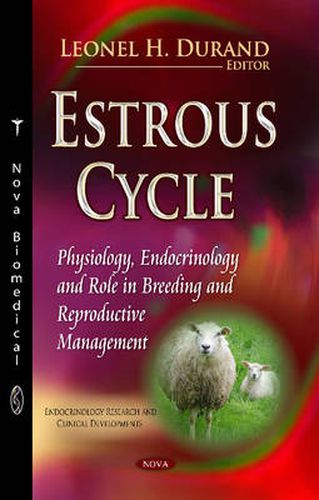Readings Newsletter
Become a Readings Member to make your shopping experience even easier.
Sign in or sign up for free!
You’re not far away from qualifying for FREE standard shipping within Australia
You’ve qualified for FREE standard shipping within Australia
The cart is loading…






The oestrus cycle represents a cyclic pattern of ovarian activity in which many physiological and morphological events occur to enable ovulation, receptivity, and to maintain the establishment of pregnancy. In this book, the authors present current research in the study of the physiology, endocrinology, role in breeding and reproductive management of the oestrus cycle. Topics discussed include the importance of hormones and rearing environments corresponding to sex differences in physiology and behaviour; cell renewal in hormone-responsive tissues during the oestrus cycle; new improvements for oestrus cycle synchronisation in cattle; a picture of zona pellucida as seen by way of a transmission electron microscope; and a comparative study of different populations of spiny mice (Acomys) and their reproductive response to increased salinity, melatonin, and aldosterone treatments assessed by the oestrus cycle.
$9.00 standard shipping within Australia
FREE standard shipping within Australia for orders over $100.00
Express & International shipping calculated at checkout
The oestrus cycle represents a cyclic pattern of ovarian activity in which many physiological and morphological events occur to enable ovulation, receptivity, and to maintain the establishment of pregnancy. In this book, the authors present current research in the study of the physiology, endocrinology, role in breeding and reproductive management of the oestrus cycle. Topics discussed include the importance of hormones and rearing environments corresponding to sex differences in physiology and behaviour; cell renewal in hormone-responsive tissues during the oestrus cycle; new improvements for oestrus cycle synchronisation in cattle; a picture of zona pellucida as seen by way of a transmission electron microscope; and a comparative study of different populations of spiny mice (Acomys) and their reproductive response to increased salinity, melatonin, and aldosterone treatments assessed by the oestrus cycle.